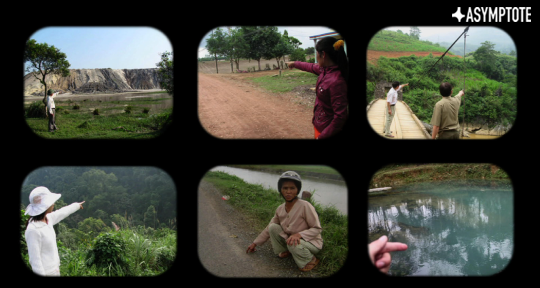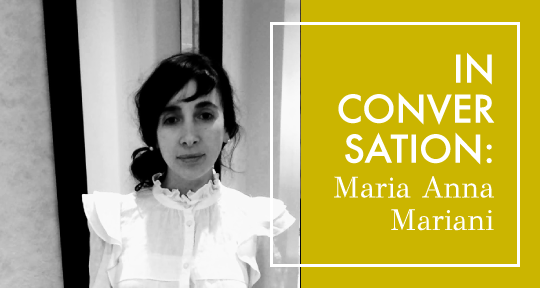The journey that a language takes to arrive at us is often unimaginably intricate, with all the marks of history, people, and land upon it. In the following essay, gorgeous with lyricism and intimate with the facts and ideas of past and present, Maya Nguen takes us through the emotional and physical cartography of Vietnam and its language, and how such structures reverberate against the ever-mutable definitions of identity, personhood, and home.
In the beginning is a creation myth.
Âu Cơ meets Lạc Long Quân where mountain meets sea.
They form a bond and Âu Cơ bears an egg sac with a hundred children.
At the core of their bond with one another is another bond of one with the mountain and the other with the sea. So it came to be that fifty children followed Âu Cơ for the mountain whence she came and fifty followed Lạc Long Quân for the sea whence he came. And as Âu Cơ calls for land and Lạc Long Quân calls for water their children come to call a country
land water
đất nước ¹
where land begins at the edge of the water that starts at the end of the land: is a shore that holds the country in the crossing between one word and another: between 越南 & Indochine Française & Việt Nam & Vietnam
the Vietnamese language emerges at the border
thoroughly other & utterly ones own
& defined by a border endures
Diasporic
& Pure
<< >>
In prehistory: Austroasiatic tribes living in the Red River Delta (today’s Northern Vietnam) speak a Proto-Viet language belonging to the Mon-Khmer language family.
<< >>
Beginning in 111 BC: Colonization by the Chinese empire for eleven centuries to follow. Classical Chinese is imposed as the written language of the government elite, forming the basis of politics, science, and literature. Proto-Viet continues to be spoken, and its speech, to be influenced by Classical Chinese.
<< >>
Beginning in the tenth century: Independence from the Chinese won by King Ngô Quyền at the shores of Bạch Đằng River. After a millennium of foreign occupation without a formal writing system of its own, independent Vietnam continues as before: with Classical Chinese at its helm.
<< >>
Beginning in the thirteenth century: A vernacular written script called Chữ Nôm (lit. “southern characters”) is developed on the basis of Classical Chinese to record Vietnamese folk music and poetry. Considered as the pillar of Vietnamese literature, Truyện Kiều (Tale of Kieu) by Nguyễn Du is written in Chữ Nôm. For this script, Chinese characters are naturalized to fit the Vietnamese spoken language, which itself includes Chinese words naturalized into Vietnamese. “Southern characters” in Chữ Nôm: 𡨸喃. “Southern characters” in Classical Chinese: 字南. 𡨸喃 is taught in reference to 字南. 𡨸喃 exists alongside 字南: forming a pillar: a porous border. READ MORE…


